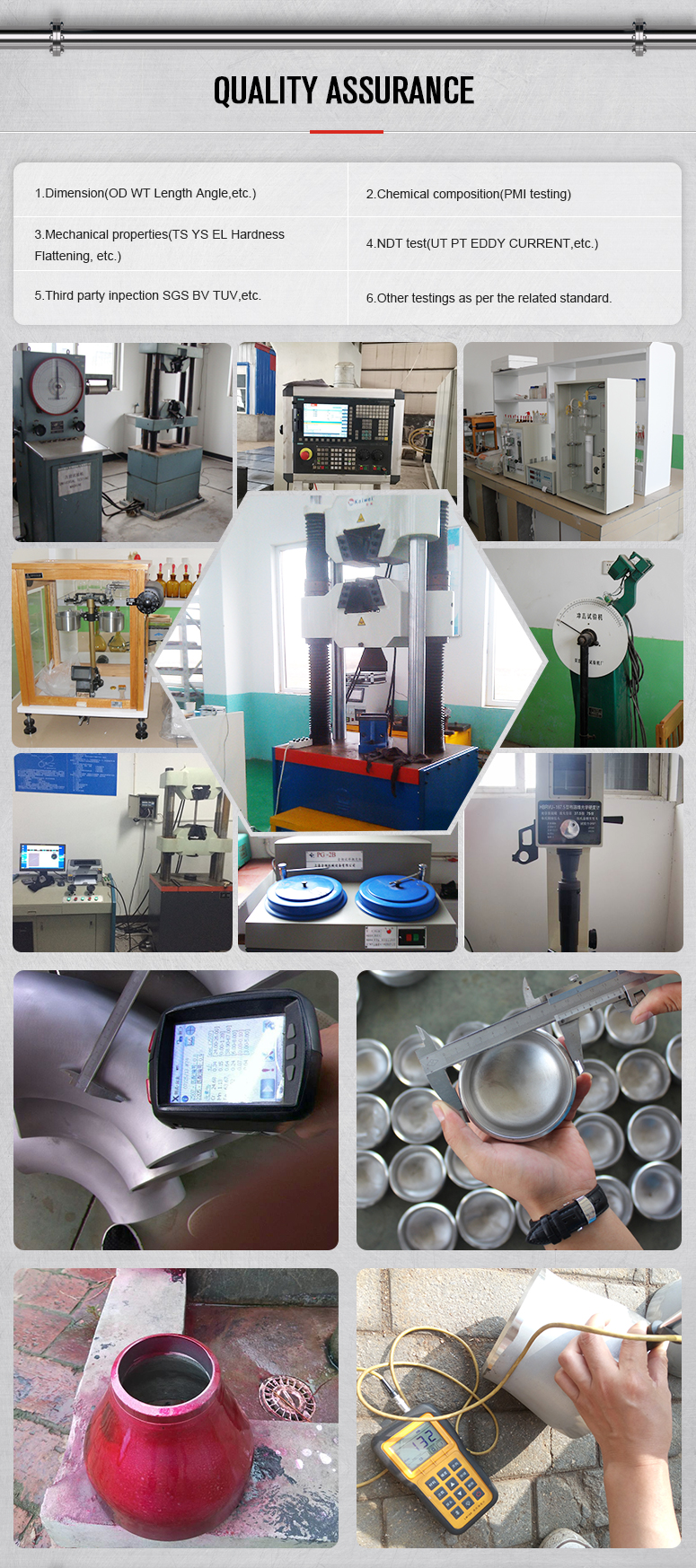Zhengzhou Huitong Pipeline Equipment Co.,Ltd. |
|
1.What’s the difference between 304 and 316 stainless steel?
You can’t tell just by looking at it. There’s no visible difference between two identical pieces of sheet metal, a polished or grained the exact same way. That’s why you need a material test report (MTR) of the actual material to validate it as being 304 or 316. We make sure we get one with every shipment we receive at Nema Enclosures so that we can assure our customers that the enclosure and its parts are constructed of the exact stainless steel material, as specified and ordered. Some small parts such as clamps and mounting feet, constructed of 316 stainless steel are specifically marked, in this case a number 6 within a circle, as shown in the photo above.
Type 304, with its chromium-nickel content and low carbon, is the most versatile and widely used of the austenitic stainless steels. Its alloys are all modifications of the 18% chromium, 8% nickel austenitic alloy. Type 304 proves to be resistant to oxidation, corrosion, and durability. All provide ease of fabrication and cleaning, prevention of product contamination offer a variety of finishes and appearances. Type 304 stainless steels are used in corrosion resistant electrical enclosures, auto molding and trim, wheel covers, kitchen equipment, hose clamps, exhaust manifolds, stainless hardware, storage tanks, pressure vessels and piping.
Type 316 stainless steel is an austenitic chromium-nickel stainless
and heat-resisting steel with superior corrosion resistance as
compared to other chromium-nickel steels when exposed to many types
of chemical corrodents such as sea water, brine solutions, and the
like. Since Type 316 stainless steel alloy contains molybdenum
bearing it has a greater resistance to chemical attack than 304.
Type 316 is durable, easy-to-fabricate, clean, weld and finish. It
is considerably more resistant to solutions of sulfuric acid,
chlorides, bromides, iodides and fatty acids at high temperature.
Stainless steels containing molybdenum are required in the
manufacture of certain pharmaceuticals in order to avoid excessive
metallic contamination. The bottom line is that Type 316 stainless
steel costs a little more upfront but you could save a whole lot on
the back end – especially if your enclosure is going to be used
outdoors. Something worth keeping in mind when you’re designing
your next enclosure.
2.About SS 304.
Grade 304 is a standard "18/8" stainless. It is the most versatile
and most widely used stainless steel available, even though a wide
range of alternatives are available; and has excellent forming and
welding characteristics. The balanced austenitic structure of Grade
304 enables it to be severely deep drawn without intermediate
annealing. This means that this grade steel is dominant in the
manufacture of drawn stainless parts such as sinks, hollow-ware and
saucepans. For these applications, it is common to use special
"304DDQ" (Deep Drawing Quality) variants. Grade 304 can be readily
braked or roll-formed into a variety of components for applications
in the industrial, architectural, and transportation fields. It
also has outstanding welding characteristics. Post-weld annealing
is not required when welding thin sections.
Composition:
| C | Mn | Si | P | S | Cr | Mo | Ni | N | |
| 304 | min. | - | - | - | - | - | 18 | - | 8 | - |
| max. | 0.08 | 2 | 0.75 | 0.045 | 0.03 | 20 | 10.5 | 0.1 | ||
| 304L | min. | - | - | - | - | - | 18 | - | 8 | - |
| max. | 0.03 | 2 | 0.75 | 0.045 | 0.03 | 20 | 12 | 0.1 | ||
| 304H | min. | 0.04 | - | - | -0.045 | - | 18 | - | 8 | - |
| max. | 0.1 | 2 | 0.75 | 0.03 | 20 | 10.5 |
Mechanical Properties:
| Grade | Tensile Strength (MPa) min | Yield Strength 0.2% Proof (MPa) min | Elongation (% in 50 mm) min | Hardness | |
| Rockwell B (HR B) max | Brinell (HB) max | ||||
| 304 | 515 | 205 | 40 | 92 | 201 |
| 304L | 485 | 170 | 40 | 92 | 201 |
| 304H | 515 | 205 | 40 | 92 | 201 |
Physical Properties:
| Grade | Density (kg/m3) | Elastic Modulus (GPa) | Mean Coefficient of Thermal Expansion (μm/m/°C) | Thermal Conductivity (W/m.K) | Specific Heat 0-100 °C (J/kg.K) | Electrical Resistivity (nΩ.m) | |||
| 0-100 °C | 0-315 °C | 0-538 °C | at 100 °C | at 500 °C | |||||
| 304/L/H | 8000 | 193 | 17.2 | 17.8 | 18.4 | 16.2 | 21.5 | 500 | 720 |

2.Packaging and transportation: